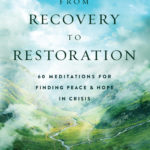by Elizabeth | Aug 8, 2014 | Learning Story
Kelly Valen, in her compelling 2010 study of female relationships,Twisted Sisterhood discovered through poll that 97 percent of women “believe it is crucial that we improve the female culture in this country.”
In the last post, I told a story of being attacked by a fellow Christian and how a sister-friend loved me well in the aftermath. Why do women treat other women so harshly, and what can be done to improve female culture? When we think about what happened to women in the fall, broken sisterhood might make more sense. Since Adam and Eve sinned, all women have these things in common:
- know we are naked.
- feel shame.
- want to hide.
- make pitiful attempts to cover ourselves.
- blame others for our sin and sorrow, including God.
- feel pain in childbirth — I’ve always wondered — does this include the pain of monthly cycles?
- desire to dominate men.
- or, as some people interpret it, desire men so much we’ll do anything to get and keep them.
- demand control over our worlds.
How do these sins play out in women’s relationships with other women?
Mean Girls, a 2004 comedy, satirized the cliques and bullying that are commonplace occurrences in high schools. Any woman who has suffered being shunned on a playground as a child or being cyberbullied as a teen knows that the dark terror and shame of female bullying holds no humor.
The culture of female aggression does not end when we grow up, though — new studies find women sabotaging other women in every arena of life:
- In the workplace, women will deliberately make a co-worker look incompetent.
- In the area of motherhood, the phrase “Mommy wars” has been coined to describe the friction between moms who stay-at-home full-time and those who work full-time.
- In the competition for scarce resources of “good” available men, women demean and manipulate other women.
Sadly, the fallen reality of women’s relationships is not limited to the broader culture but plays out regularly among Christians as well. The Bible recounts the earliest true and tragic stories of female aggression:
- Sarah, the mother of all nations, abuses her slave Hagar — and Hagar is no saint either.
- The terrible story of Rachel and Leah is the first account of “sister-wives” and leaves no illusions about dark conflict between women vying for a man who isn’t the catch he might have seemed to be.
- Martha complains to no less than the Savior himself about her sister’s laziness.
- The apostle Paul calls out two devoted ministers of the gospel, Euodia and Synteche, regarding their ministry quarrels.
If competition, condemnation, and irritation exist in women’s relationships in the Bible, it should come as no surprise that these and other sins continue to affect Christian women’s community:
- Some women labor to look good physically and spiritually at Bible study; others hate the pretense and refuse to attend.
- Moms beat one another up over things like how babies and children should be fed, how they should be educated, and how they behave.
- Gossip is veiled as prayer requests or “concern,” and some women create laws where the Bible offers gospel-freedom.
- Worst of all, cliquishness still exists, and some women feel more isolated or rejected at church than they ever did in a high school cafeteria.
Thankfully, as my earlier story suggests, the dark side is not the whole story about women’s relationships, either in or outside the church. Now that we know why our community is so broken, we can see how the gospel brings hope for true sisterhood. Stay tuned for posts that look at the redemption of relationships. If you want to make sure you receive blog posts, sign up now — you’ll only get one email a week with any recent posts.
What do you think? Have you had experiences with broken sisterhood that have made you shy away from women’s community?
What redemptive stories do you have of women’s relationships? Please comment.
by Elizabeth | Aug 5, 2014 | Learning Story
If you’ve been around here for long, I hope you’ve recognized my passion for gospel-cultivated women’s community. A sad reality of the fallen world is that women learn to attack each other from the time they are young girls. In the new book I am writing, I am looking for the hope of redemption in the midst of broken sisterhood stories. here’s one such story:
Sammie, regular attendee at the women’s group for about a year, invited me to lunch. I had been wanting to get to know her better, and I was looking forward to it. When the waitress arrived, Sammie didn’t order anything. That seemed a little odd, since she had invited me to lunch. It should have tipped me off to what was to come.
We exchanged small talk until my salad arrived, but as I took my first bite, she spoke in a serious tone, “I’ve been wanting to talk with you about the group.” Not waiting for me to respond, she launched into a litany of accusations. In summary, I was authoritarian in my leadership, I had steered the accusations away from her attempts to be “real,” and I was stealing women’s voices.
Wow. She blind-sided me. I knew enough not to engage her bitter stream of condemnation, but at the time, I was so roughed up that I couldn’t speak the gospel into it. I remember little about the next 20 minutes. I think I tried to do some of the things you’re supposed to do when someone offers critique, like nod and affirm and listen. I am sure at some point I caved into self-defense that she utterly demolished. Finally, the excruciating encounter ended with her departure. I quickly paid my check, rushed to the safety of my car, and burst into tears.
I drove down the road for a few minutes, still reeling from the blow, then realized (thanks to the Holy Spirit I’m sure) what I needed to do. I pulled over, grabbed my phone, and called a friend. A longtime sister in Christ, my friend listened to my pain and humiliation, then finally spoke soft words. She reminded me of the gospel I believed and taught regularly to others. Without slandering my accuser, she told me the story of how Christ died so I could love my enemies. She helped me see the slivers of truth embedded in the harsh words; she showed me where the words were wrapped in misperception and manipulation.
This story of sorrow and redemption reveals two powerful realities about women’s relationships: we can be one another’s cruelest saboteurs or one another’s most faithful supporters. Women desperately need healthy, thriving community, what I am calling here, “sisterhood.” Yes, we are sinners (Romans 3:23), but as Christians, we are also saints (Romans 1:7). In the gospel, there is not only hope for a sisterhood of sinner-saints, but a calling for it. Christ has redeemed us as a chosen people and a holy nation (1 Peter 2:9); in order to live fully into our new creation, we must love other women as our sisters. The gospel is the story of hope that such a community can exist.
Copyright for little sisters’ image: Martin Novak: www.123rf.com

by Elizabeth | Jul 18, 2014 | Learning Story
When we know God’s story — the story of the gospel; the Story of Faith and Hope the Bible tells, it changes our prayers. No longer dry, dull, and distant, prayer becomes interaction with the story God has told and is telling. That is why an essential feature of each Living Story Bible study is called “Praying Story.” Here is one I wrote for the end of Chapter 6: The Hero’s Story, in Living God’s Story of Grace. Try praying this story aloud, or write your own prayer to the God who fulfills promises and restores hope in His way, in His time:
Dear God, Fulfiller of Faith, Restorer of Hope,
We come to you humbly, confessing that we so often want your promises to be fulfilled in our time and in our way. We thank you that you are God and we are not, that you refuse to bow down to our demands, but instead draw us to kneel before your majesty, to declare your wonder, to marvel at your beauty. Help us to walk as heroes of faith, fixing our eyes on your heavenly city from afar, remembering your “already” redemption, and knowing with deep assurance that you are redeeming and transforming now. You will never stop until the day Christ returns to fulfill your greatest promise — eternal life with you in the new heavens and the new earth. In hope assured by you and faith founded in you, we pray. Amen.
by Elizabeth | Jul 15, 2014 | Learning Story
It’s July 15 — can it really already be time to think about back to school and back to Bible study? Apparently so, since I received a from our women’s ministry leader that teachers needed to let her know by August 1 what we’re teaching.
If any of you are looking for good material, be sure to check out the Living Story Bible studies. I wrote these to help you know the story of grace Scripture tells, to know your own stories, and to live them out in real life. I address questions that people new to Bible study may ask and that people who have been doing it for years may need to be reminded of — in short, the good news of the gospel.
There are now three studies in the series — you can do them in sequential order, but they will also stand alone:
 Learning God’s Story of Grace looks at the whole story of redemption: Creation, Fall, Redemption, and Consummation, and what it means for our lives.
Learning God’s Story of Grace looks at the whole story of redemption: Creation, Fall, Redemption, and Consummation, and what it means for our lives.
 Living God’s Story of Grace focuses on the struggle of faith and hope that we all experience.
Living God’s Story of Grace focuses on the struggle of faith and hope that we all experience.
 Loving in God’s Story of Grace is about, you guessed, it — love — the radical, countercultural love that the gospel tells.
Loving in God’s Story of Grace is about, you guessed, it — love — the radical, countercultural love that the gospel tells.
Try them — you’ll like them! And, if you do one of these studies with a group and would like me to meet with your group via Skype or telephone, let me know! I would love to interact with you!
Check out this “theological theme,” in which I try to take some “big words” and make them make sense in real life:-)!
Theological Theme: Justification by Faith
“Abram believed and it was credited to him as righteousness.”
In the first chapter of the study, we asked the question, “What does faith do?” One of the most important byproducts of faith is “justification.” To understand the word justification, consider this story:
I had spoken impulsively, reeling off some sarcastic remark sure to draw peals of laughter from my daughter’s friends. Immediately I felt chagrin. My joke came at the expense of my daughter’s dignity. I wanted to justify my action, saying I was only trying to be funny, but it was clear there was no excuse – I had traded my daughter’s reputation for a moment of fame among a group of 13-year-olds. In God’s court of law, I would have been declared guilty of a love-failure.
As sinners, which we all are (Romans 3:23), there is no justification for our sin. In a court of law, we are declared guilty. That is why Genesis 15:4 is such a radical statement. Abraham is declared “righteous,” that is, “not guilty,” just because of his faith. Abraham’s righteousness does not come from his moral rectitude or good actions – it comes from his faith, which comes from God.
Faith in Christ brings an even more astounding reality to our stories. We receive the credited righteousness (see imputed righteousness in Learning God’s Story) by transferring trust from our own efforts at being good to Christ’s finished work on the cross (Romans 3:23-26). When a person confesses, “I believe Christ has fully paid the price I owe for my sin,” we are credited with Christ’s righteousness (Romans 4:23-24).
The radical concept of justification by faith should humble and astonish us. One of the great old hymns asks, “How can we keep from singing?” Indeed, when we understand that the holy God sent his holy Son as the only adequate substitute for our sins, how can we keep from living a life of loving God and loving others?
by Elizabeth | Jun 24, 2014 | Learning Story
“We are having a problem with this shame-resilience group.”
“What is that?”
“We don’t like the word ‘shame.’”
“What do you want to do about it?”
“We’d like to call it ‘sha-may’.”
This is part of a dialogue in a delightful clip of Dr. Brene Brown’s presentation at the “Up Experience.” If you haven’t yet heard of Brene Brown, she is a sociologist and a self-proclaimed “shame-researcher.”
As a women passionate about helping other women live authentic, courageous, connected, compassionate lives, I have been intrigued by Dr. Brown’s work on shame and vulnerability and her invitation to women and men to yield striving in perfectionism and performance.
(I also enjoy the fact that Dr. Brown will be found in either cowgirl boots or clogs. If you know me, you know why:-)!)
Her sense of humor and delight in story is compelling, and she is majoring on all the important attributes of a life well-lived. I’m a fan.
As I listened to her thoughts on shame and “living story,” I thought about my life and the lives of women I coach. We desperately need to know the real reason we have freedom from sha-may. Brene says the cure for perfection and performance is knowing “I am enough.” I would adjust that slightly and say, “I am not enough. Christ is more-than-enough. The odd truth of the gospel is that God gave me Christ’s more-than-enough-ness. (righteousness).”
According to the gospel, my real hope for freedom from shame comes from the Cross. Here is the strange storyline: Christ died for me, a sinner, on the Cross, and even more surprising, God has called me “so very right” in Christ.
Here’s what that looks like in real life: I’ve done things I should be ashamed of – sin — turned my back on a friend, yelled at my children, dissed my husband. There’s no enough-ness in me that can save me from that shame. But Christ can, Christ has, and Christ will again. Christ, the perfect, sinless God-man, so much more-than-enough, shamed “sha-may.” In Christ, God has made me new creation and declared me — more-than-enough-in-Christ.
Therein lies the freedom from perfectionism that our hearts desperately need. In this story, we truly can live freely enjoying and glorifying God, enjoying and loving others.










![When’s the last time you highlighted your weakness?
Therefore I will boast all the more gladly in my weaknesses, so that the power of Christ may rest upon me. 2 Cor. 12:10
All-Powerful God,
We confess,
we in Western culture
crave power, control, and independence.
The last thing we want
is to seem weak.
And yet, weakness is the way of Christ,
so it must be our way as well.
The apostle Paul understood that,
so in the face of accusations
that he wasn’t an apostle,
he countered the boasting of the “super-apostles”
with some boasting of his own:
“If I must boast,
I will boast of the things
that show my weakness” (2 Cor. 11:30).
And then he mentions how he was lowered in a basket through the window of a wall in Damascus, of all places,
a place he went to persecute Jews only to be knocked down on the road,
struck blind, by his Lord and Savior himself.
Paul shares many other weaknesses in 2 Corinthians,
a book that’s all about weakness as the way
of followers of Christ.
He asked that you would relieve him from a “thorn in the flesh,”
but you did not.
Instead, you said,
“My grace is sufficient for you,
for my power is made perfect in your weakness” (2 Cor. 12:9).
Lord, we know we really are weak —
[for each of these areas, name any weaknesses you have]
weak in our bodies,
weak in our work,
weak in our wills,
weak in our faith,
weak in our hope,
weak in our love.
We believe
that you your power is made perfect
in and through our weakness.
Help our unbelief.
In Jesus’s name. Amen.
Read 2 Corinthians 11:30-12:10.
#Dailyprayer #devotional
#hopewriterlife #goodnewsfeed #votd #Biblestudy #dailydevotions #grace #dailyverse #womensministry #aging
#gospelshaped #shereadstruth #womenoftheword #christianliving](https://www.elizabethturnage.com/wp-content/plugins/instagram-feed/img/placeholder.png)